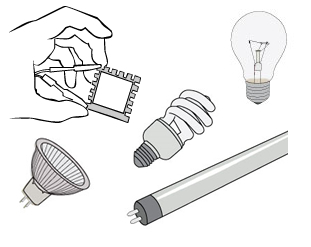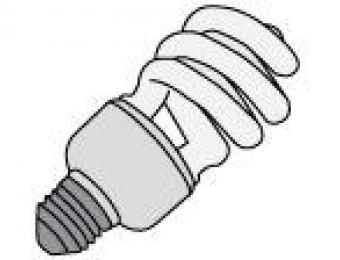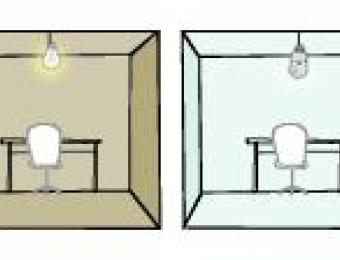
How to compare light bulbs
Comparing different lighting technologies really is a case of comparing apples and oranges – or at least Granny Smith apples with Red Delicious. Sure, they’re all light bulbs, but there’s a lot more to consider when upgrading from, say, a standard incandescent globe to a new, energy saving compact fluorescent lamp (CFL) or LED globe.
Efficiency and running costs
Overall, traditional incandescent light bulbs are by far the most inefficient lighting option – they produce much more heat and consume more power than CFLs. They also require between 40 and 100W for applications that could use a 20W CFL. The higher the wattage, the higher the running cost.
The light output from a 20W CFL isn’t the same as that from a 20W incandescent. Rather, a 20W CFL would be the equivalent of a 100W incandescent (roughly 20%). Halogen lights on the other hand, while not generally used as an interchangeable substitute for traditional incandescent globes anyway, use about 60% as much power to produce the same lumen output. LEDs consume much less than other technologies.
Unfortunately there is no easy ‘rule of thumb’ to convert wattages between the various technologies (unless you have an amazing head for figures), but here is a handy table to use as a very rough guide to wattage conversion for a specified lumen output. If you have an idea of how much light different incandescent bulbs produce, this may help you to understand how much other types produce.
| Light globe comparison table | ||||||||
|---|---|---|---|---|---|---|---|---|
| Incandescent globes (W) | Halogens (W) | CFLs (W) | LED globes (W) | Lumen range (lm) | ||||
| 40W | 28W | 7-10W | 4-5W | 470lm | ||||
| 60W | 42W | 15-18W | 6-8W | 806lm | ||||
| 75W | 52W | 17-20W | 7-12W | 1055lm | ||||
| 100W | 70W | 20-25W | 16-20W | 1521lm | ||||
| 150W | 105W | 29-32W | 25-28W | 2452lm | ||||
| Note: It’s important to remember that this sort of comparison is only part of the story. Different globe types serve different purposes, behave differently, have their own practical advantages and disadvantages and cover a broad range of costs and lifespans. This is especially the case for LED globes, which differ very significantly from product to product. Lumen value source: EU ErP equivalence comparison (supplied by Lighting Council Australia) |
||||||||





